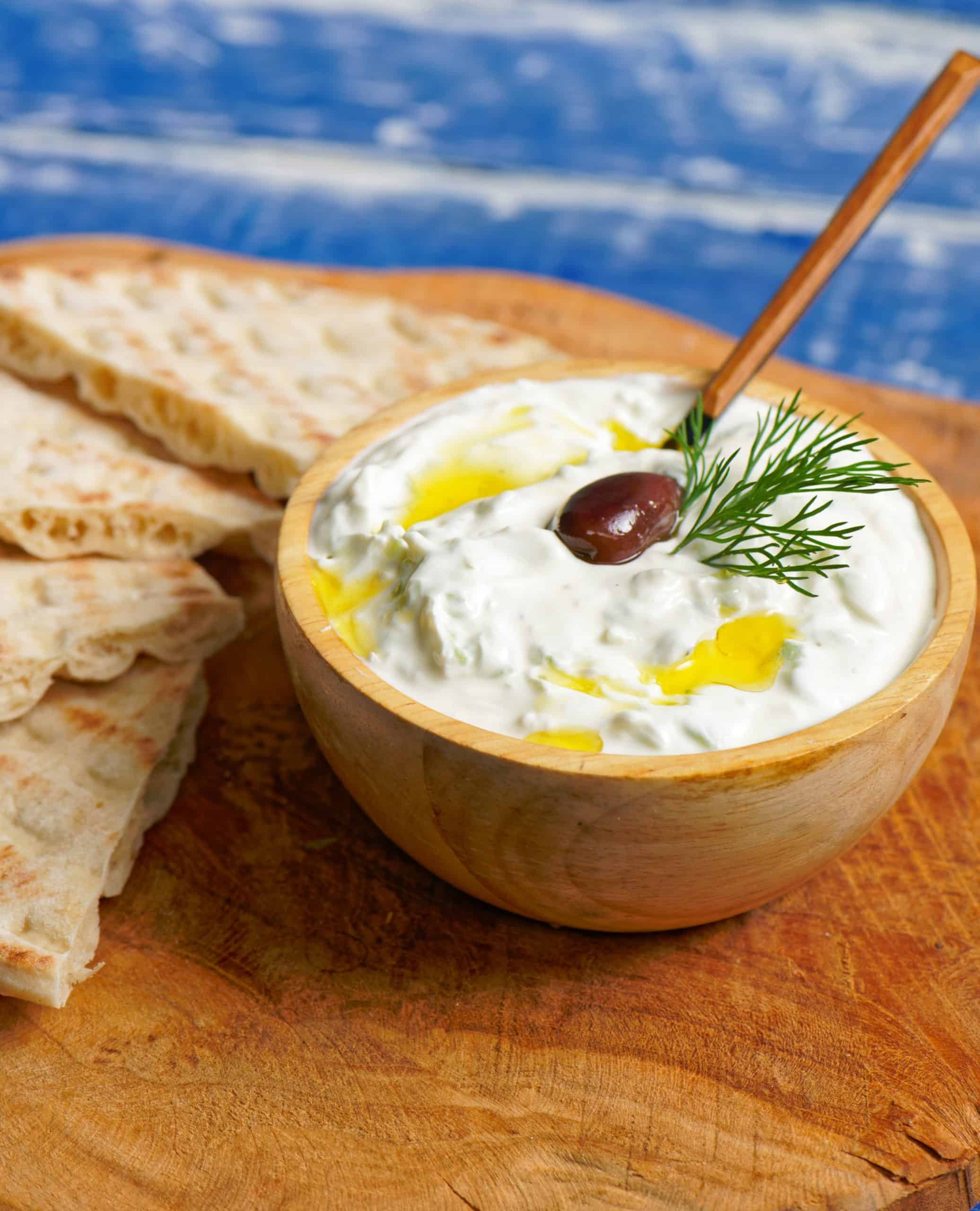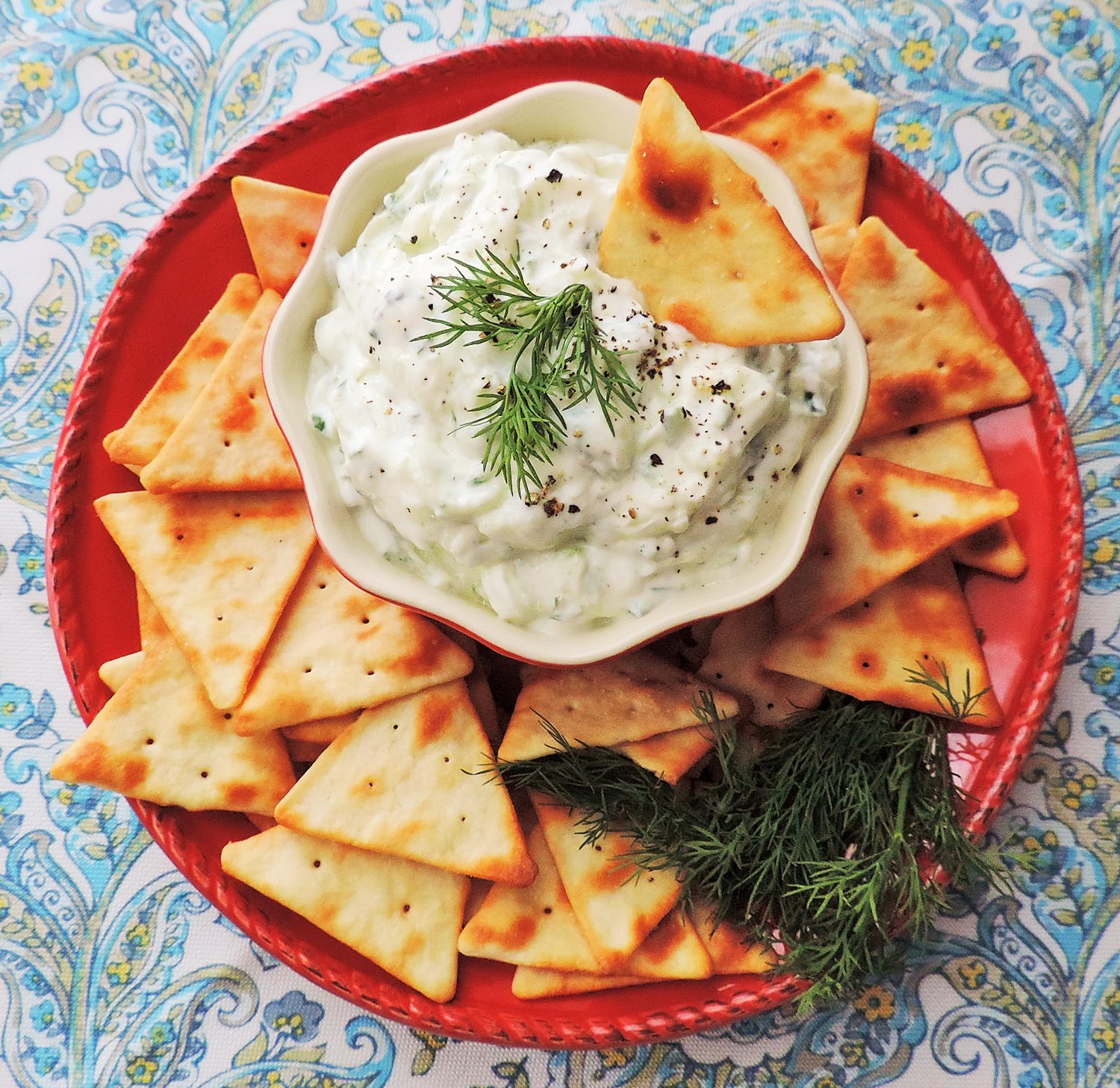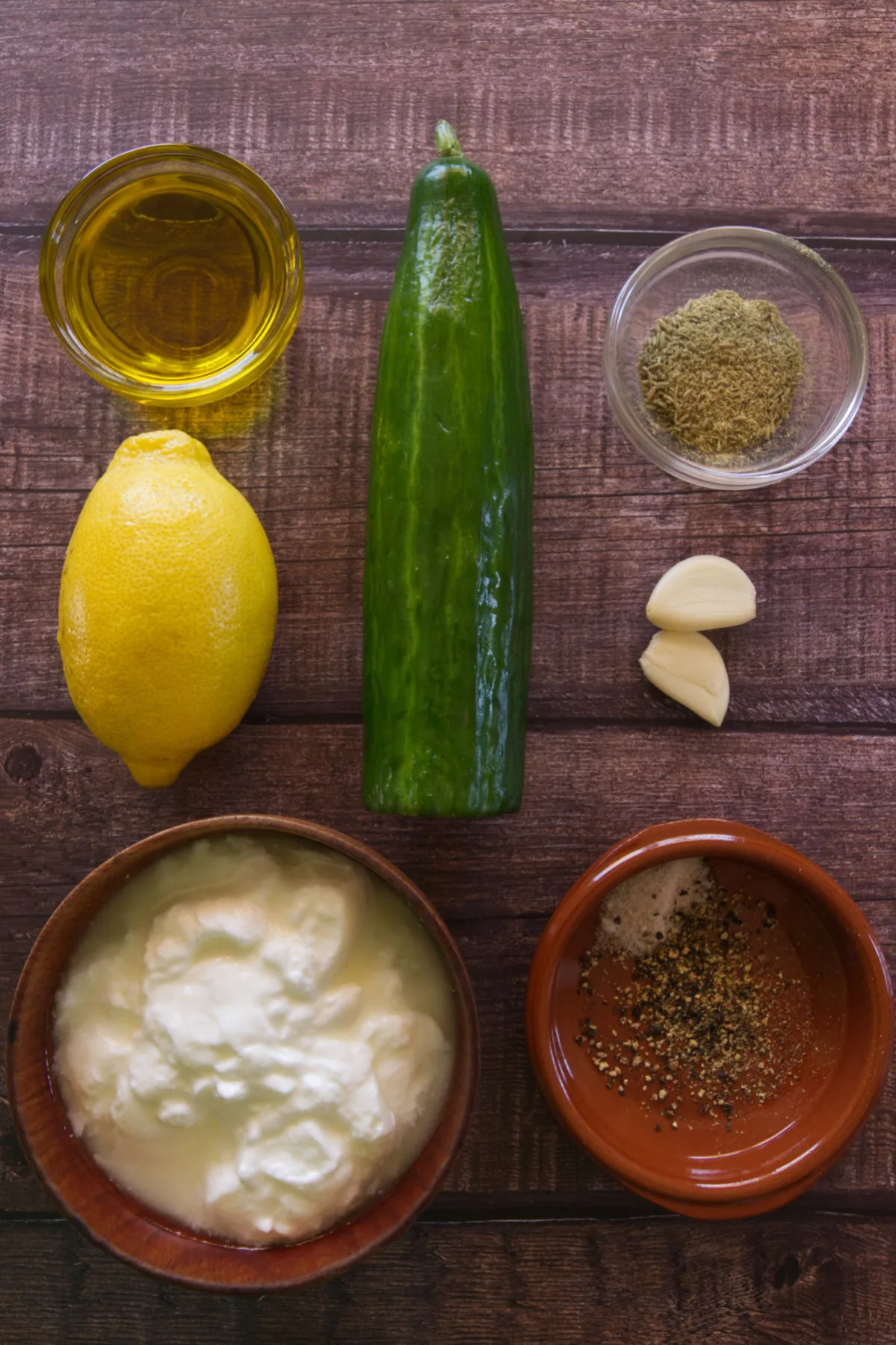Tzatziki: A Creamy Journey Through Greek Cuisine
Related Articles
- A Journey Through The Melting Pot: Exploring The World Of Swiss Fondue
- The Hottest Pepper Sauces Of 2024: Incorporating Ghost Peppers Into Your Dishes
- Crafting Perfect Pasta: Regional Italian Dishes You Can Make At Home
- A Spicy Journey: Exploring The World Of Sichuan Hot Pot
- A Slice Of History: The Enduring Allure Of Pizza Margherita
Introduction
Discover everything you need to know about Tzatziki: A Creamy Journey Through Greek Cuisine
Tzatziki: A Creamy Journey Through Greek Cuisine

Tzatziki, a cool and creamy yogurt-based sauce, is an integral part of Greek cuisine, beloved for its refreshing flavor and versatility. This simple yet delicious dip, spread, and condiment has a rich history intertwined with the culinary traditions of Greece. As we delve into the world of Tzatziki, we’ll explore its origins, uncover the secrets of its preparation, and discover the myriad ways it elevates dishes and tantalizes taste buds.
A Journey Through Time: The History of Tzatziki
The story of Tzatziki is as much about cultural exchange as it is about culinary innovation. While its exact origins remain somewhat shrouded in history, its roots can be traced back to the Byzantine Empire and the Ottoman era, a time when Greece was under Turkish rule. The influence of Turkish cuisine is evident in the use of yogurt, a staple in Turkish culinary traditions.
The Role of Yogurt: Yogurt, a fermented dairy product, has been a mainstay in the Mediterranean region for centuries. Its production, a natural process of fermenting milk with bacteria, allowed for the preservation of milk and the creation of a versatile ingredient. In Greek cuisine, yogurt, known as "γιαούρτι" (yaourti), plays a vital role, appearing in soups, sauces, and desserts.
The Turkish Connection: The Turkish influence on Tzatziki can be seen in the use of "cacık," a similar yogurt-based dip with origins in Turkish cuisine. Cacık, which often features cucumber, garlic, and dill, shares a similar flavor profile with Tzatziki, suggesting a shared culinary ancestry.
Evolution and Adaptation: Over time, as Greece embraced its independence and developed its distinct culinary identity, Tzatziki evolved into its own unique creation. The use of fresh herbs like mint and dill, the inclusion of olive oil, and the specific combination of flavors solidified Tzatziki as a cornerstone of Greek culinary tradition.
Beyond the Basics: Exploring Variations of Tzatziki
While the classic Tzatziki recipe remains a beloved standard, the culinary landscape of Greece offers a diverse range of variations that showcase the adaptability of this versatile sauce. Here are a few notable variations:
1. Tzatziki with Lemon: A touch of lemon juice adds a bright acidity to the classic Tzatziki, complementing the creamy yogurt and fresh herbs. This variation is particularly well-suited for serving with grilled meats and fish.
2. Tzatziki with Feta Cheese: For a richer and more savory flavor, crumbled feta cheese can be incorporated into the Tzatziki. The salty, tangy notes of feta create a delightful contrast with the creamy yogurt and fresh herbs.

3. Tzatziki with Herbs: Experimenting with different herbs can bring a unique twist to the classic Tzatziki. Adding chopped parsley, oregano, or even a touch of basil can introduce new layers of flavor and aroma.
4. Tzatziki with Spices: A pinch of ground cumin, coriander, or paprika can add a subtle warmth and complexity to the Tzatziki. These spices pair well with grilled vegetables and roasted meats.
5. Tzatziki with Yogurt Alternatives: For those seeking dairy-free options, Tzatziki can be adapted using plant-based yogurt alternatives like coconut yogurt or cashew yogurt. These alternatives offer a creamy texture and a subtle flavor that complements the other ingredients.
Unlocking the Secrets of Tzatziki: A Step-by-Step Guide to Preparation
Making Tzatziki at home is a rewarding experience, allowing you to personalize the flavors and create a delicious dip that complements your meal. Here’s a step-by-step guide to preparing this classic Greek sauce:
Ingredients:
- 1 cup Greek yogurt (full-fat or low-fat)
- 1 cucumber, peeled, seeded, and grated
- 2 cloves garlic, minced
- 1/4 cup chopped fresh dill
- 1/4 cup chopped fresh mint
- 2 tablespoons extra virgin olive oil
- Salt and black pepper to taste

Instructions:
-
Prepare the Cucumber: Peel and seed the cucumber. Grate the cucumber using a fine grater. Place the grated cucumber in a fine-mesh strainer and let it drain for 15-20 minutes. This step helps remove excess moisture and prevents the Tzatziki from becoming watery.
-
Combine the Ingredients: In a medium bowl, combine the drained cucumber, minced garlic, chopped dill, and chopped mint. Add the Greek yogurt, olive oil, salt, and black pepper. Stir until well combined.
-
Chill and Serve: Cover the Tzatziki bowl and refrigerate for at least 30 minutes to allow the flavors to meld. Serve chilled with pita bread, grilled meats, vegetables, or as a topping for salads.
Tips for Perfect Tzatziki:
-
Yogurt Quality: Use high-quality Greek yogurt for the best results. Greek yogurt, known for its thick and creamy texture, is the ideal base for Tzatziki.
-
Cucumber Drainage: Thoroughly draining the grated cucumber is crucial for preventing a watery Tzatziki. Using a fine-mesh strainer ensures that excess moisture is removed.
-
Fresh Herbs: Use fresh herbs whenever possible. Fresh dill and mint add a vibrant aroma and flavor that elevates the Tzatziki.
-
Olive Oil Quality: Opt for extra virgin olive oil for its rich flavor and aroma. The olive oil adds a depth of flavor and a smooth texture to the Tzatziki.
-
Seasoning: Adjust the salt and pepper to your taste. The amount of seasoning can be adjusted based on the other ingredients used in the Tzatziki.
-
Customization: Don’t be afraid to experiment with different variations of Tzatziki. Adding lemon juice, feta cheese, or other herbs can create unique flavor combinations.
-
Storage: Store leftover Tzatziki in an airtight container in the refrigerator for up to 3 days.
The Versatility of Tzatziki: Elevating Dishes and Satisfying Cravings
Tzatziki is a culinary chameleon, adapting to a wide range of dishes and flavors. Here are some creative ways to incorporate this delightful sauce into your meals:
1. Dip and Spread: Tzatziki is a classic dip for pita bread, vegetables, and even chips. Its creamy texture and refreshing flavor make it a perfect accompaniment for appetizers and snacks.
2. Condiment for Grilled Meats: Tzatziki adds a cool and tangy counterpoint to the smoky flavors of grilled meats like chicken, lamb, and fish. It can be served alongside the grilled meat or used as a topping.
3. Topping for Salads: Tzatziki adds a creamy and flavorful twist to salads. It can be used as a dressing or as a topping for salads featuring grilled vegetables, feta cheese, or chickpeas.
4. Filling for Wraps and Sandwiches: Tzatziki adds a delicious layer of flavor to wraps and sandwiches. It can be combined with grilled chicken, vegetables, or feta cheese for a satisfying and flavorful meal.
5. Sauce for Soups and Stews: Tzatziki can be used as a sauce for soups and stews, adding a creamy and refreshing element to hearty dishes. It pairs well with lentil soups, chickpea stews, and vegetable soups.
6. Marinade for Chicken or Fish: Tzatziki can be used as a marinade for chicken or fish, adding a tangy and flavorful coating. The yogurt helps to tenderize the meat and infuse it with a delicious flavor.
7. Spread for Bruschetta: Tzatziki can be spread on toasted bread for a simple and delicious appetizer. It can be topped with chopped tomatoes, onions, or other vegetables for added flavor.
8. Ingredient for Greek Yogurt Bowls: Tzatziki can be incorporated into Greek yogurt bowls, adding a creamy and flavorful layer to a healthy and refreshing breakfast or snack.
Beyond the Plate: Tzatziki in Greek Culture
Tzatziki’s significance in Greek culture extends beyond its culinary role. It is often associated with gatherings and celebrations, symbolizing the warmth and hospitality of Greek traditions. Whether enjoyed at a family gathering, a taverna dinner, or a casual lunch, Tzatziki brings people together and evokes a sense of shared culinary heritage.
Tzatziki in Modern Greek Cuisine: Today, Tzatziki continues to be a beloved staple in Greek cuisine, appearing on menus across the country and in kitchens around the world. Its versatility, refreshing flavor, and cultural significance ensure its enduring popularity.
Tzatziki as a Culinary Ambassador: As Greek cuisine gains global recognition, Tzatziki serves as a culinary ambassador, introducing people to the flavors and traditions of Greece. Its simplicity and adaptability make it a gateway to exploring the wider world of Greek cuisine.
Conclusion: A Taste of Greece in Every Bite
Tzatziki, a creamy and flavorful yogurt-based sauce, is a testament to the culinary ingenuity and cultural heritage of Greece. From its origins in the Byzantine Empire and the Ottoman era to its evolution into a beloved staple in modern Greek cuisine, Tzatziki has captured the hearts and taste buds of generations. Whether enjoyed as a dip, a spread, a condiment, or a topping, Tzatziki offers a taste of Greece in every bite, inviting us to savor the flavors and traditions of this vibrant culinary culture.
Closure
We hope this article has helped you understand everything about Tzatziki: A Creamy Journey Through Greek Cuisine. Stay tuned for more updates!
Don’t forget to check back for the latest news and updates on Tzatziki: A Creamy Journey Through Greek Cuisine!
Feel free to share your experience with Tzatziki: A Creamy Journey Through Greek Cuisine in the comment section.
Keep visiting our website for the latest trends and reviews.







